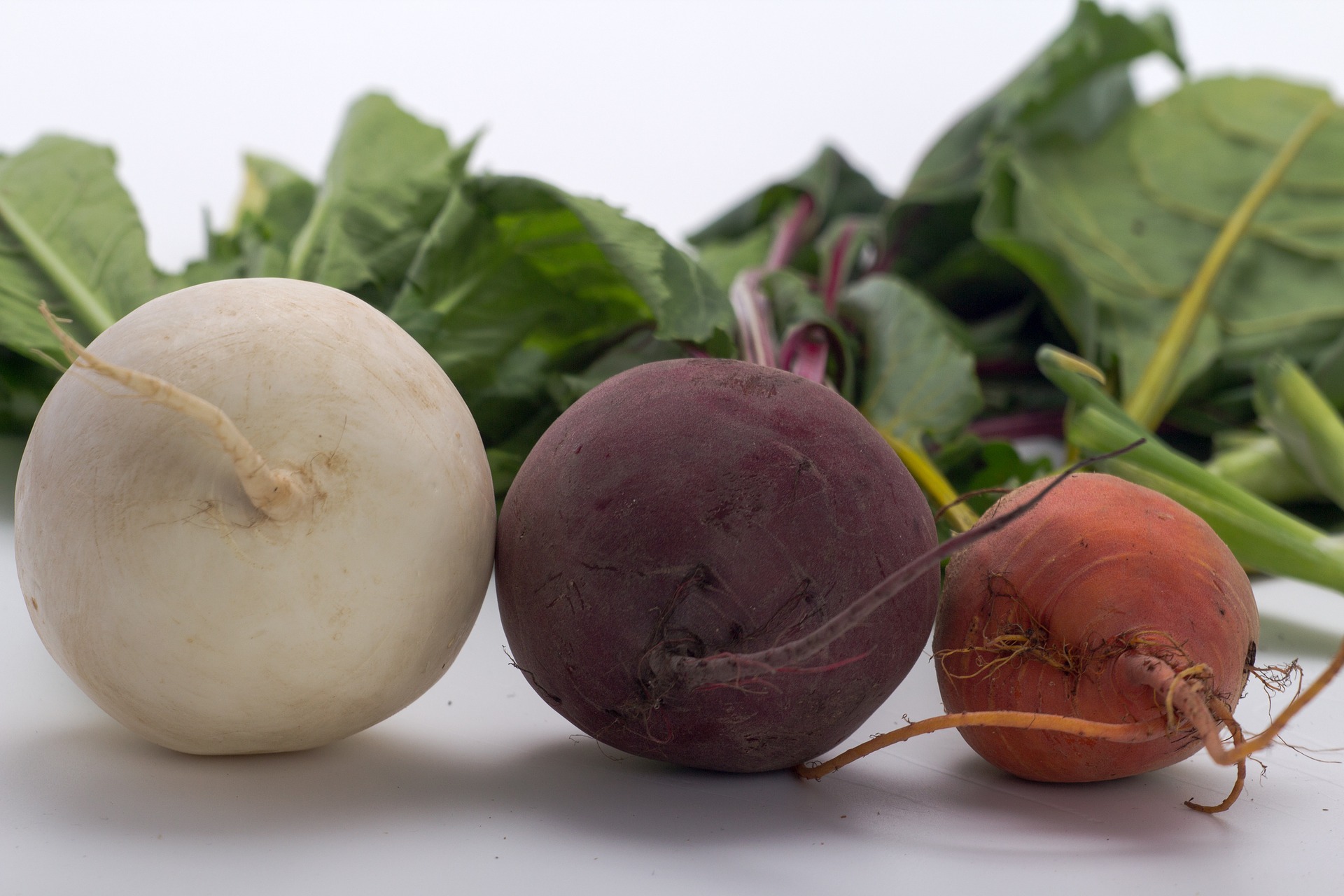We’re getting into root vegetable season – how about the difference between beets and turnips?
In addition, we’ll also be taking a quick look at their fully edible greens, and the difference between them as well.
- Beet: any of various biennial plants belonging to the genus Beta, of the amaranth family, especially B. vulgaris, having a fleshy red or white root.
- Turnip: the thick, fleshy, edible root of either two plants of the mustard family, the white-fleshed Brassica rapa rapifera or the yellow-fleshed rutabaga.
Beets:
- Typically have a deep red/purple color.
- Have a rustic, earthy flavor, with an undertone of sweetness.
- Have a high sugar content.
- Are in the same family as Swiss chard.
- Are often served roasted, to bring out the sweetness.
Other varieties of beets include golden beets, Chioggia beets, and baby beets.
Turnips:
- Are usually a light purple and white color.
- Have a cabbage-like flavor.
- Look like rutabagas, but have a much milder taste.
- Are related to broccoli and Brussels sprouts.
Both beets and turnips:
- Are root vegetables with edible greens.
- Can be eaten raw, but are often cooked.
- Need to be peeled.*
- Have no fat or cholesterol.**
*Although, for beets, leaving the peel and stem in tact while cooking can help maintain the color and flavor.
**For an in-depth look at the nutritional differences, go here.
The main variance of a turnip, as indicated by the definition is a rutabaga. It does have a bolder flavor.
It’s also worth mentioning: Both beets and turnips have been around for quite some time. The ancestor of the beet, the wild beet, originated in prehistoric times; ancient Romans were one of the first to begin cultivating the root. Turnips are believed to have been grown or nearly 4,000 years.
So then, beets and turnips are root vegetables that are typically cooked, with beets being a bit sweeter than turnips. Sounds pretty similar to me – so how about subbing one for the other in cooking?
It’s not as easy as subbing out their greens, but more on that in a moment.
You know by now that I love my Food Substitutions Bible. This one had a lot to say about turnips.
Substitutes for beets were canned beets or beefsteak tomatoes, the latter of which surprised me.
Turnips have a number of possible substitutions:
- Rutabaga (less sweet)
- Kohlrabi bulb (sweeter)
- Parsnip (sweeter)
- Salsify (milder)
- Celeriac (stronger flavor with celery aromas)
- Parsley root (stronger flavor)
- Broccoli stems (sweeter, milder)
- Asian radishes such as daikon (more peppery)
- Black radishes (much sharper and hotter flavor)
Short answer: Despite their similarities, no, you cannot switch out beets and turnips in recipes.
Although both beet and turnip greens are edible, beet greens seem to be more widely publicized for some reason.
When it comes to both beet and turnip greens, you can basically treat them as Swiss chard, mustard leaves, or any other greens: young, softer greens can be tossed into salads, while the tougher ones should be cooked.
The aforementioned Food Substitutions Bible recommends red or green chard leaves, turnip greens, or mature spinach to swap out in place of beet greens.
For turnip greens, like the roots, the list of potential substitutes is longer: green chard leaves or spinach as with the beet roots (both with a milder taste than turnip greens) or the following: mustard greens, dandelion greens, kohlrabi greens, collards, and beet greens themselves.
In conclusion, beets are sweeter than turnips, while turnips have a bit of a bite, not unlike a radish. Beets are in the same family as Swiss chard, while turnips are more related to cruciferous vegetables like broccoli.
The green part of the vegetables, though, appear to be highly interchangeable.
